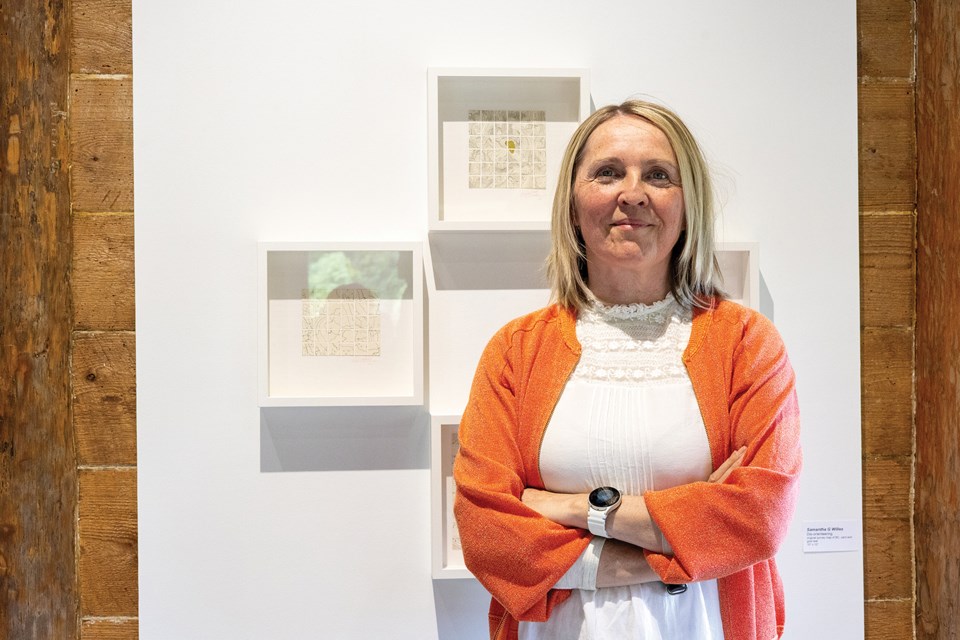The complicated sinews of home, identity and family run through a series of new pieces unveiled at the Sunshine Coast Arts Centre by U.K.-based artist Samantha Willes. After Willes was born of parents who had emigrated to Canada from Europe and Ukraine, she was removed from her mother and adopted by foster parents in the United Kingdom.
It was common practice during the so-called Baby Scoop Era in the mid-20th century — distinguished by a rise in premarital pregnancies and forced adoption of infants by married couples.
“Taking infants from their mothers has been a practice that has gone on a long time, and it happens all over the place,” Willes said, citing historical examples from Canada, Australia and Greenland. More recently, Russia has removed children from Ukraine for the purposes of cultural assimilation.
Willes opened her exhibition, Née during a reception at the arts centre on May 23. “It’s a bit of a homecoming here,” said Willes, acknowledging the presence of her birth mother. “I’ve had the privilege of knowing my mother as an adult, and my brother, who’s here too, from the same mom.” (During an earlier visit to the Sunshine Coast, Willes contributed to the Arts Council’s Friends of the Gallery exhibition.)
The elements of Willes’s latest series have been assembled for the first time since she completed her Master’s degree over a decade ago — complemented by additions that reflect her ongoing journey of self-discovery. Willes was 18 years old when she learned that she had been born Canadian; she didn’t meet her birth mother until her early 30s.
The revelation crescendoed into a sustained period of inner turmoil: “I didn’t look like [my adoptive family],” she said. “They didn’t have my mannerisms. We were different. Even though they told me that I had another family somewhere I wasn’t allowed to talk about it. In some situations people might feel lucky that they ended up in a nice place. But I don’t feel lucky to have lost my mom and my family.”
Willes’s multidisciplinary artworks blend stop-motion animation, textiles, sculpture, and written words that express a sense of disconnection. A short video (Departed, displaced, dissolved) depicts a steamer trunk that once belonged to Belgian surrealist René Magritte — famous for his painting La reproduction interdite, in which a figure’s reflection turns its back on the mirror surface. “The trunk is about transportation,” Willes said, “is about the things you carry, and is representative of my mom bringing me to a different country in her belly.”
Fractured images of domesticity abound: in Labour of Love II, they are shards of a tannin-stained teacup and a scrap of linen tablecloth. The cotton embroidery of its companion piece replicates the shape of a stain from amniotic fluid. Monochromatic copper plate etchings suggest a willowy figure flung forward, hair streaming behind with the intensity of her momentum.
After the death of the couple who raised her, Willes finally felt greater freedom to speak about her experience. She read the 1975 essay The Laugh of the Medusa by French critic Hélène Cixous. “She, along with others, inspired me to get my voice out there,” said Willes.
A series of hanging banners fashioned from silk and cotton (How do we embrace?) are linked by fishhooks and tiny tendrils that punctuate the fabric. For Willes, the prickly process of rebuilding foundations still hangs by a thread.
Née is featured at the Sunshine Coast Arts Centre until June 21.



